.
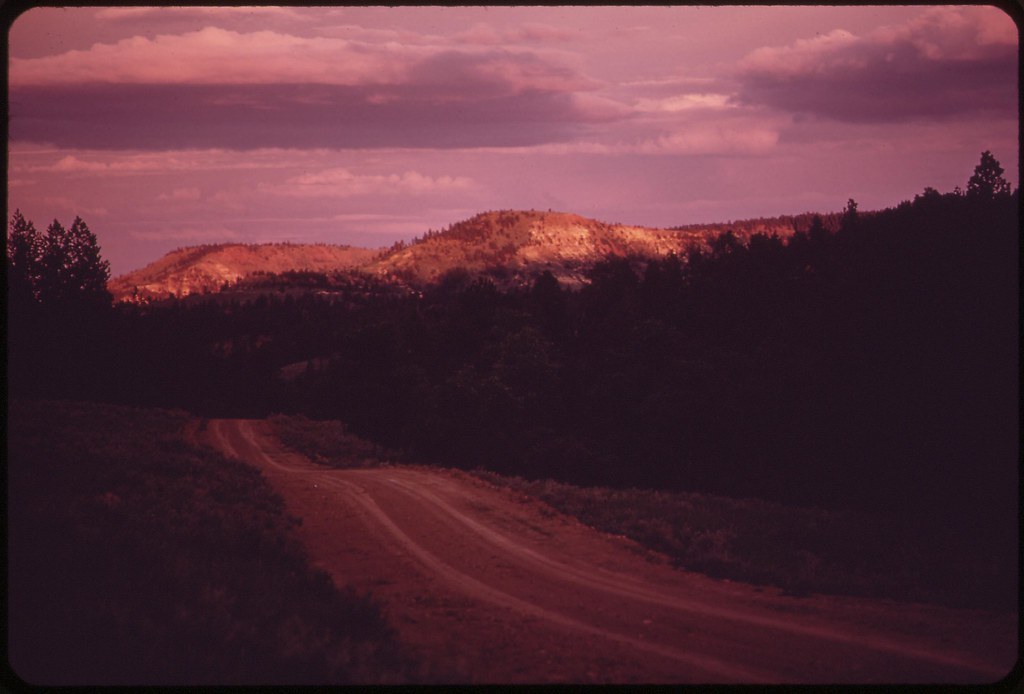
Hills and forest of Northern Cheyenne Indian reservation, Montana. Coal companies are seeking strip mine rights here from the Indian tribes.
And in all the land of your possession ye shall grant a redemption for the land.
The land shall not be sold for ever: for the land is mine, for ye are strangers and sojourners with me.
Leviticus 25: 23-24 (King James Version)
Speaking of visionaries, Simone Weil long ago saw industrial civilization as unstoppable, a “spreading catastrophe” which would destroy the earth and leave nothing for future generations “but a note in a bottle". This, perhaps, is what generations to come might find scribbled on that note: To whom it may concern: We took everything. What we couldn’t take we destroyed. We left you nothing. Fuck you. Deal with it. Sincerely, The Management Inc. Ltd. S.A.
Hazen Robert Walker, comment on Wildcatters, 2/12/13
I
sure do like that redeeming phrase from the Wyodak Coal Mine sign that
says "readily recoverable" -- sounds so neat and easy to extract the stuff
that I guess anybody with a pick and shovel can just mosey on down
there and fill his bucket to kingdom come. Too bad the landscape ain’t
so readily recoverable afterwards.
Vassilis Zambaras, comment on Wildcatters, 2/13/13
Vassilis Zambaras, comment on Wildcatters, 2/13/13
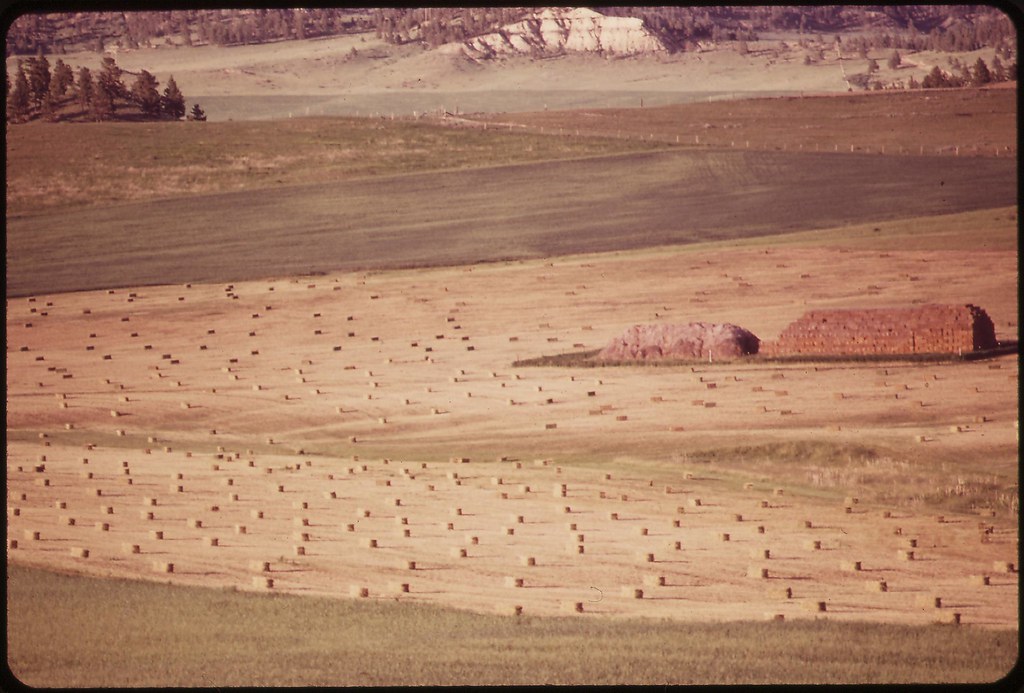
Hay fields on a ranch in Sarpy Basin, Montana. The Westmoreland Coal Company wants this land for strip mining.
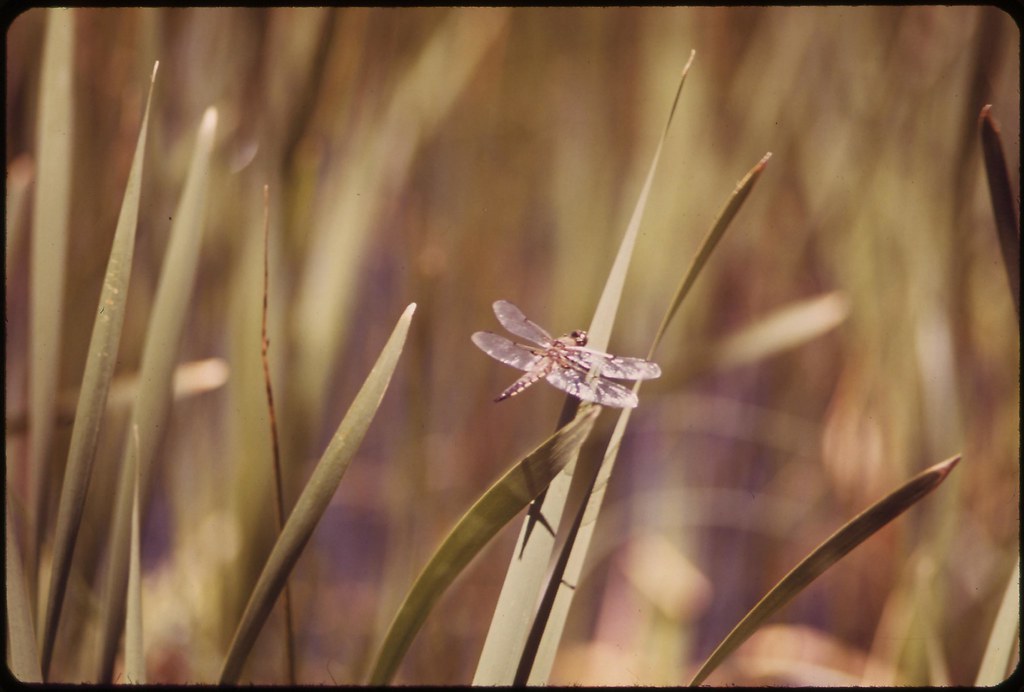
Dragonfly on marsh grass near Sarpy Basin, Montana

Virgin prairie grass near Colstrip, Montana
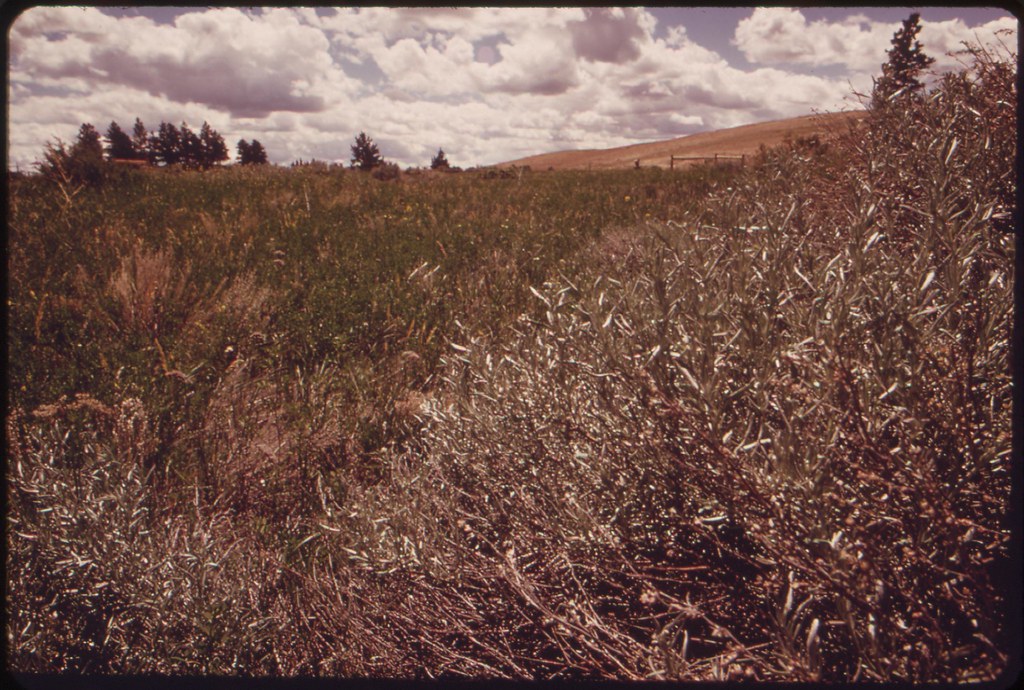
Untouched prairie grasses near Colstrip, Montana
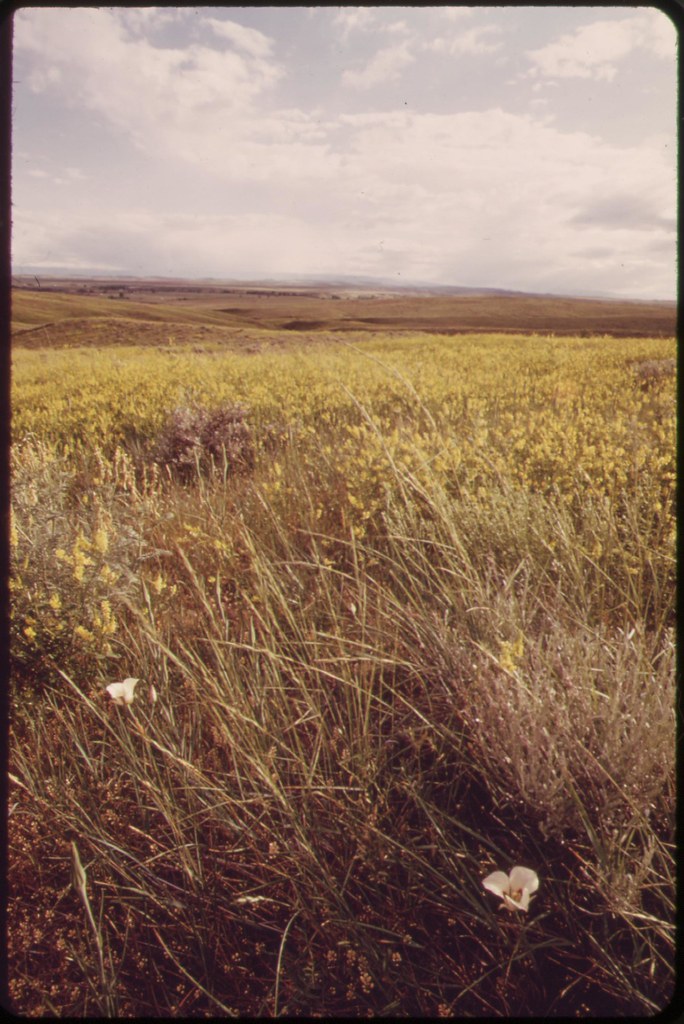
Flowers amid the grasses on the Crow Indian Reservation, Montana
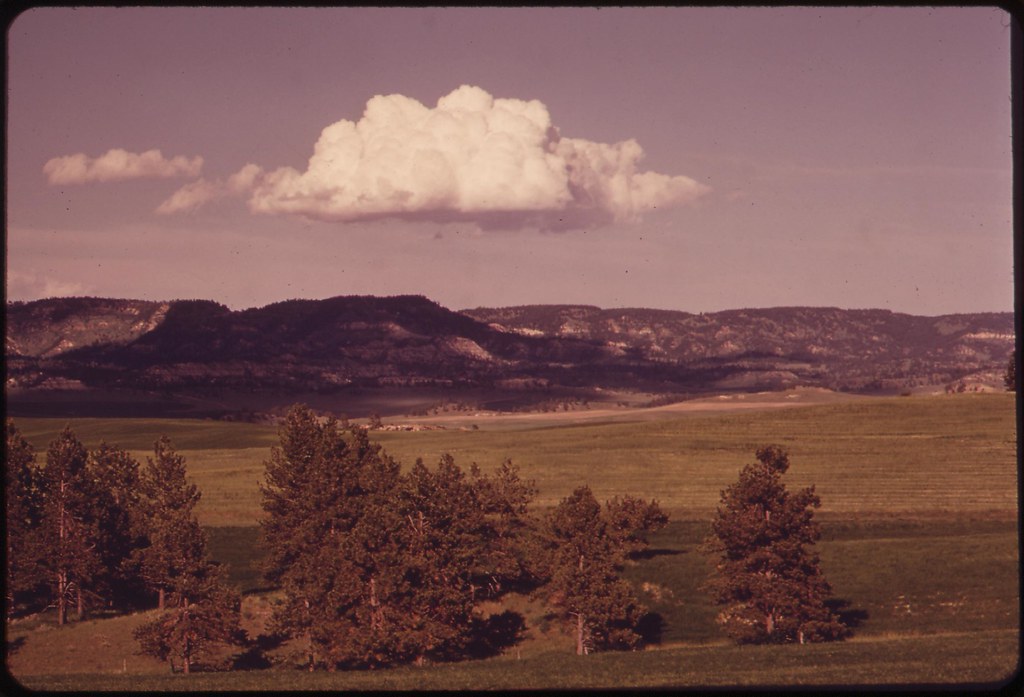
Westmoreland Coal Company's land rises above adjacent farm and ranch fields in Sarpy Basin, near Billings, Montana. Coal seams under these fields make them a target of the strip mine operators.
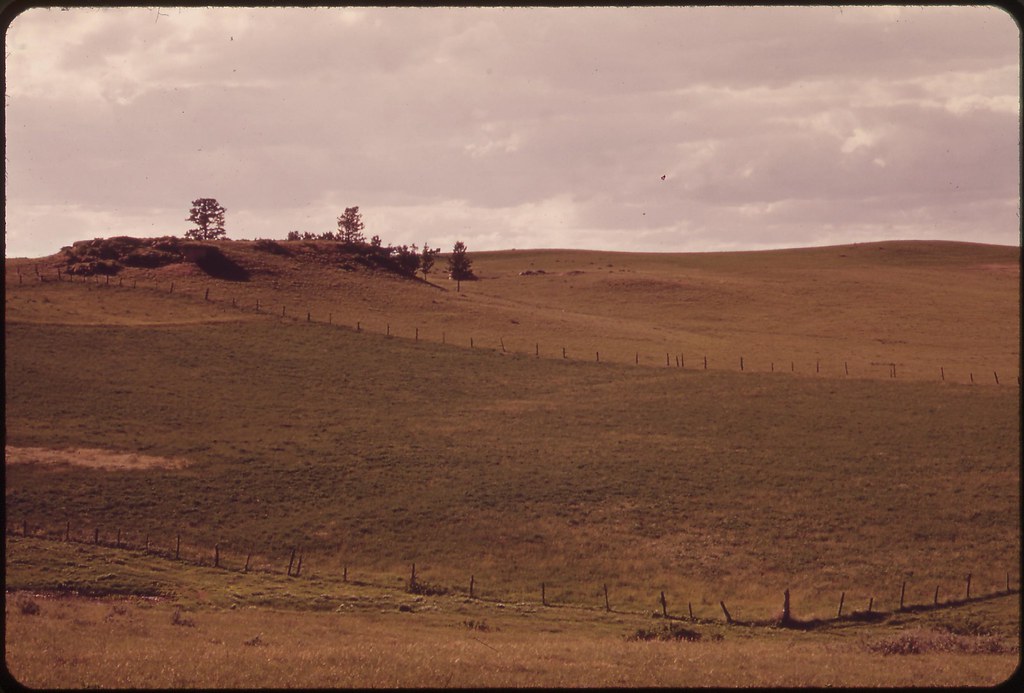
Ranch in Sarpy Basin, Montana. The Westmoreland Coal Company wants to expand its strip mining operations in this area.
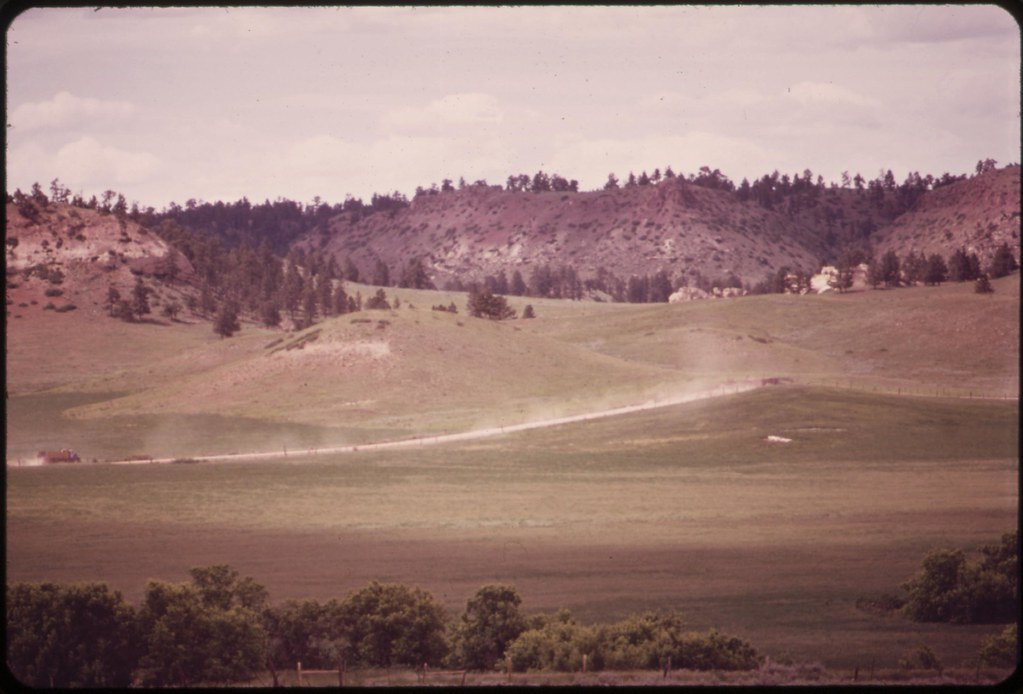
Construction trucks at railroad construction site in Sarpy Basin, Montana. The railroad will carry coal from the mines of the Westmoreland Coal Company.

Sign at the Westmoreland Coal Company mine site in Sarpy Basin, near Hardin, Montana
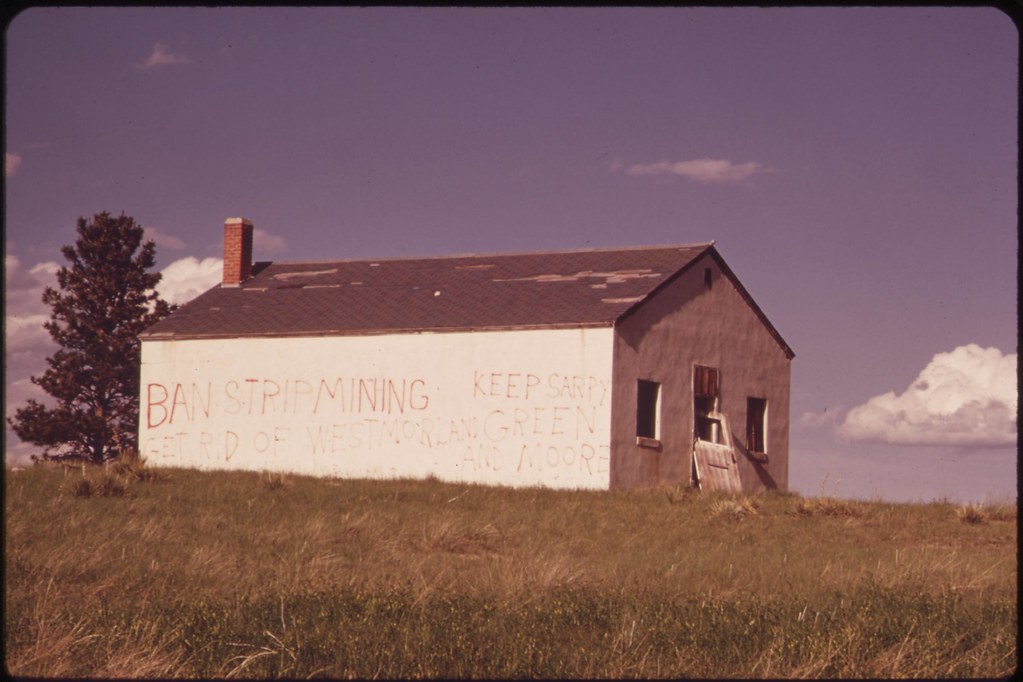
Graffiti on abandoned school house states opposition to strip-mining near Sarpy Basin

Graffiti on abandoned school house states opposition to strip-mining near Sarpy Basin
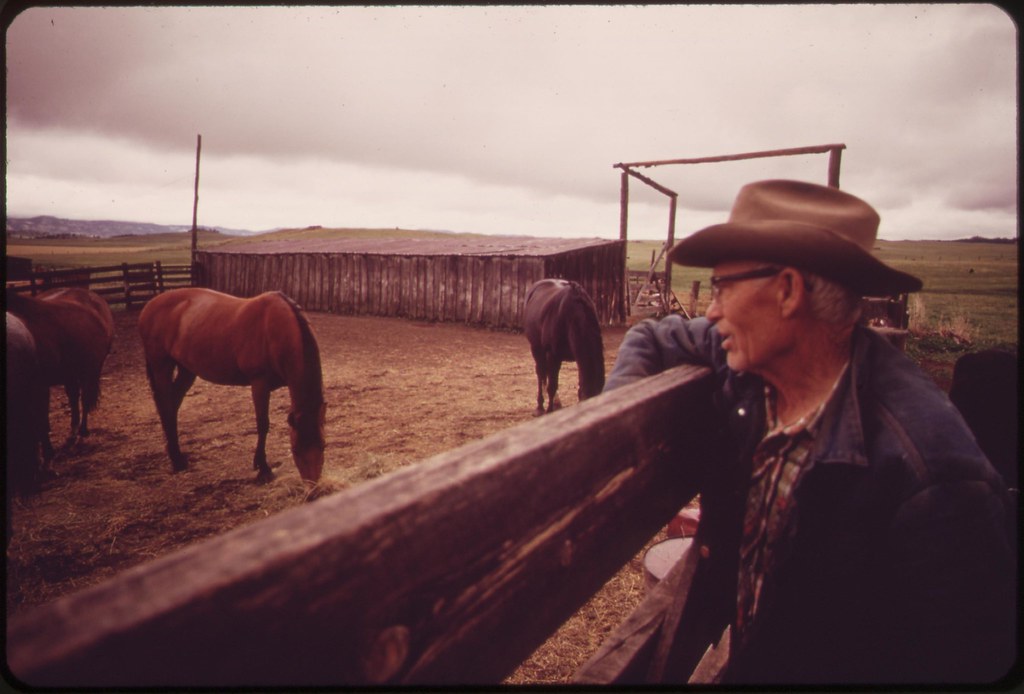
Bud Redding, rancher, settled on the Sarpy Basin land in 1916. He and his son have refused to sell their land for strip-mining development by the Westmoreland Coal Company.
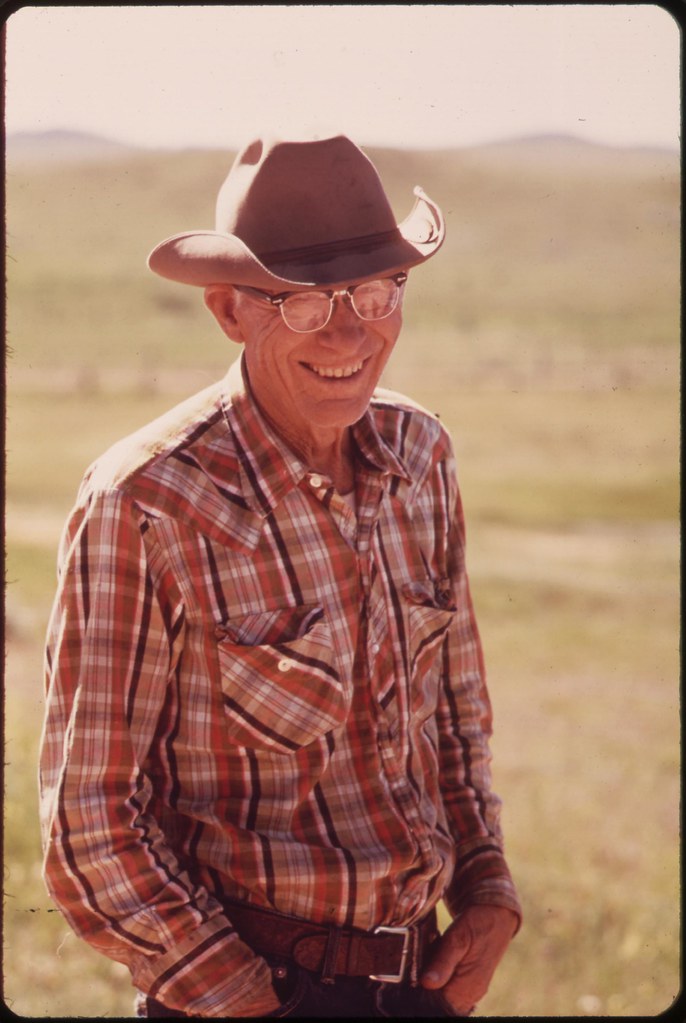
Bud Redding is one of the Sarpy Basin ranchers who are resisting the Westmoreland Coal Company's efforts to buy their land
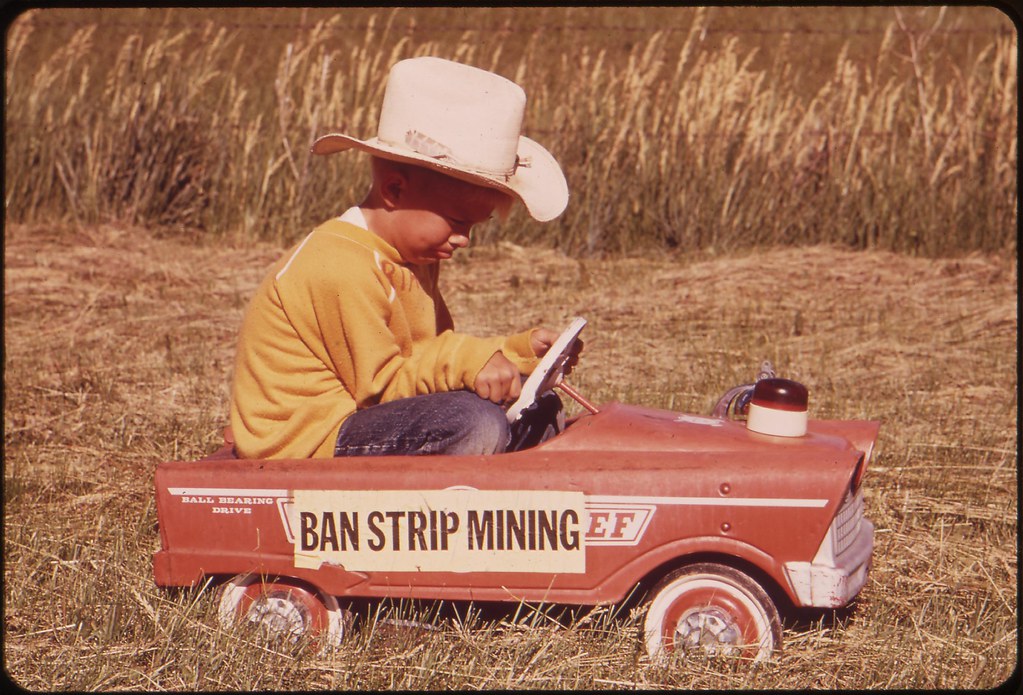
Young Rial Redding, third generation of Reddings who have ranched in Sarpy Basin, joins the resistance movement. The Reddings have refused to sell to the Westmoreland Coal Company.
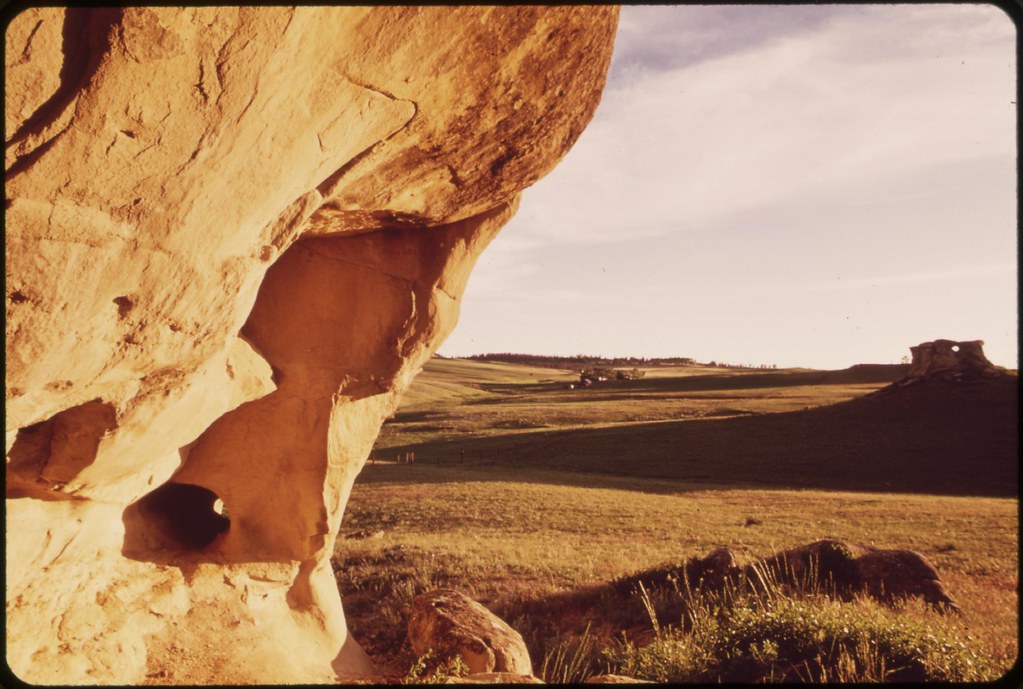
The Bud Redding ranch at sunset, Sarpy Basin, Montana. The ranch lies in the path of the expanding strip-mining operations of the Westmoreland Coal Company.
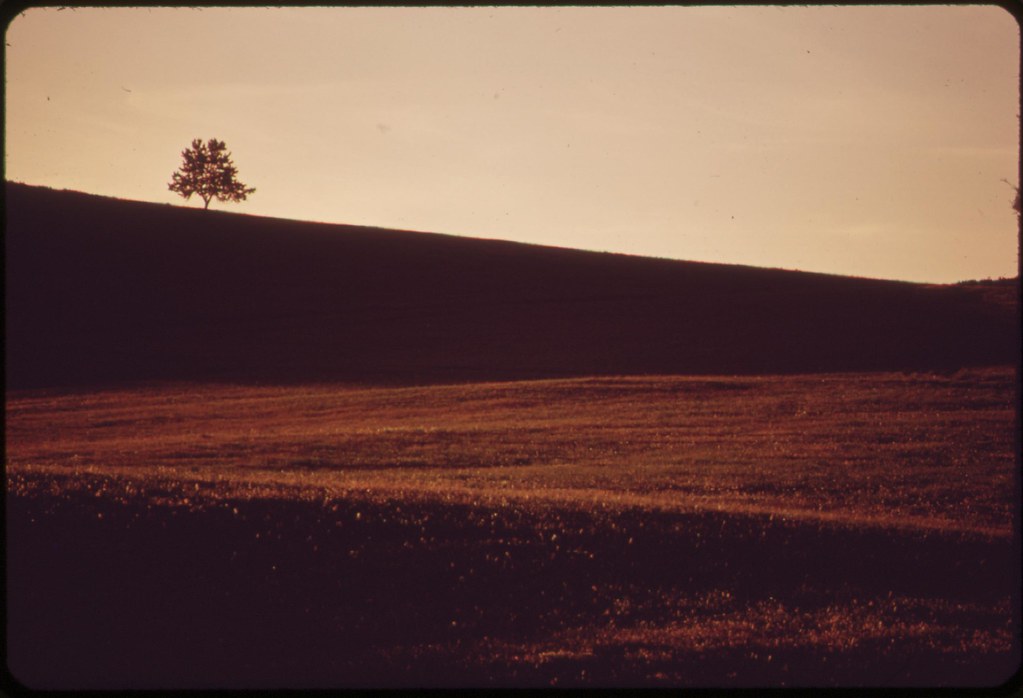
The Bud Redding ranch at sunset, Sarpy Basin, Montana

An old log home still stands in the heart of the area where massive strip-mining operations are proposed

Decker Coal Company strip mine, near Billings, Montana
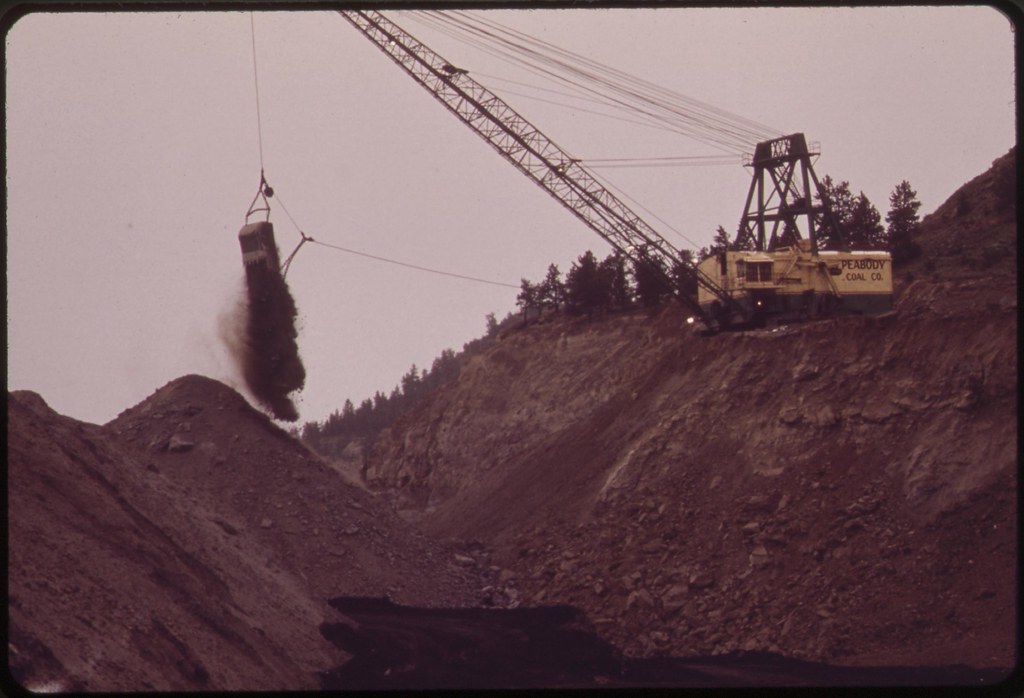
Peabody Coal Company strip mine, south of Colstrip, Montana
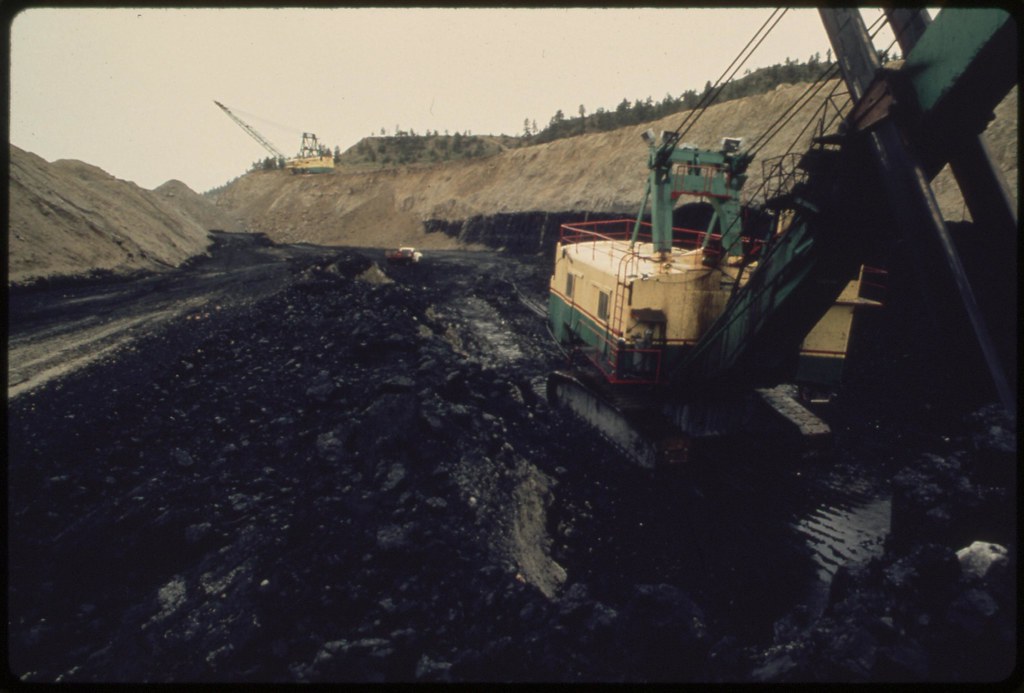
Peabody Coal Company strip mine, south of Colstrip, Montana

Peabody Coal Company strip mine, south of Colstrip, Montana
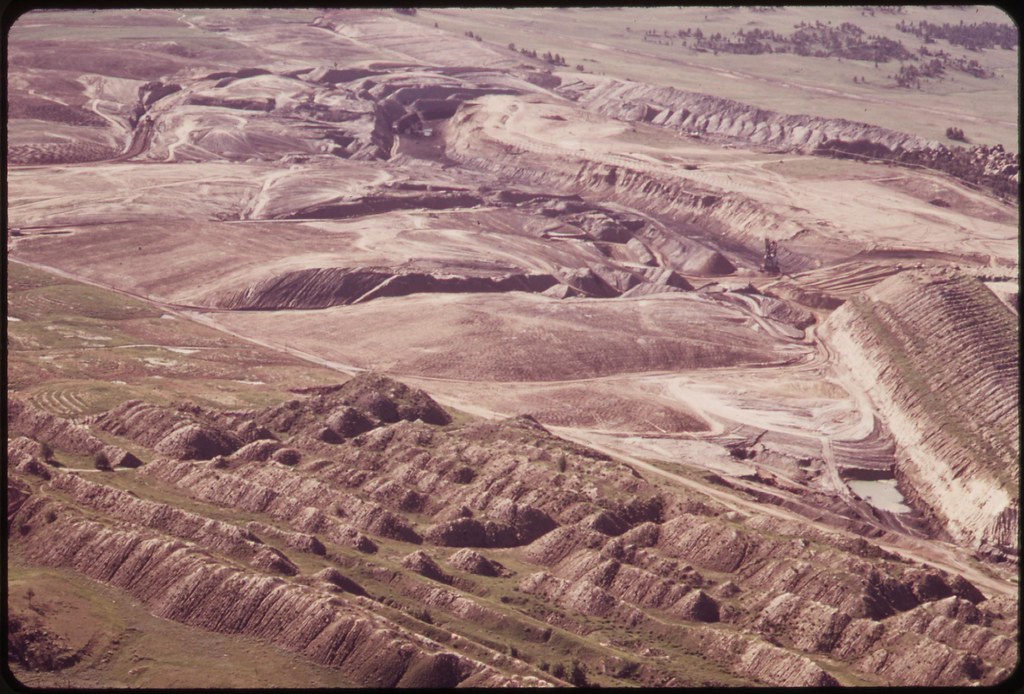
Western Energy strip mine and spoil piles, south of Colstrip,
Montana
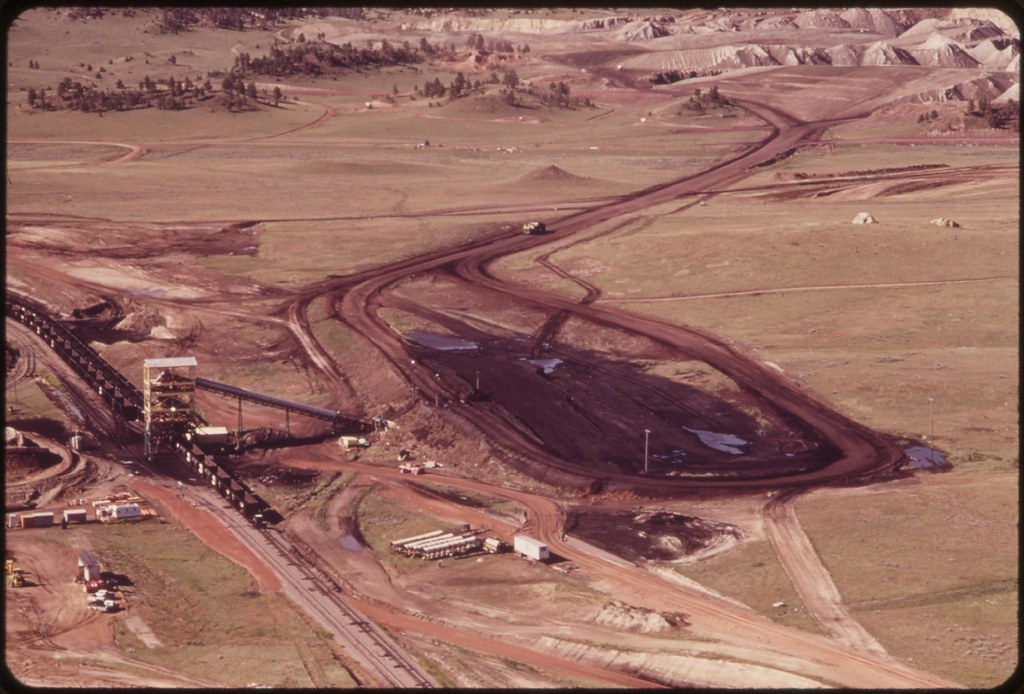
Peabody Coal Company strip mine, south of Colstrip, Montana

Peabody Coal Company strip mine, south of Colstrip, Montana

Peabody Coal Company strip mine, south of Colstrip, Montana

Peabody Coal Company strip mine, south of Colstrip, Montana

Peabody Coal Company strip mine, south of Colstrip, Montana
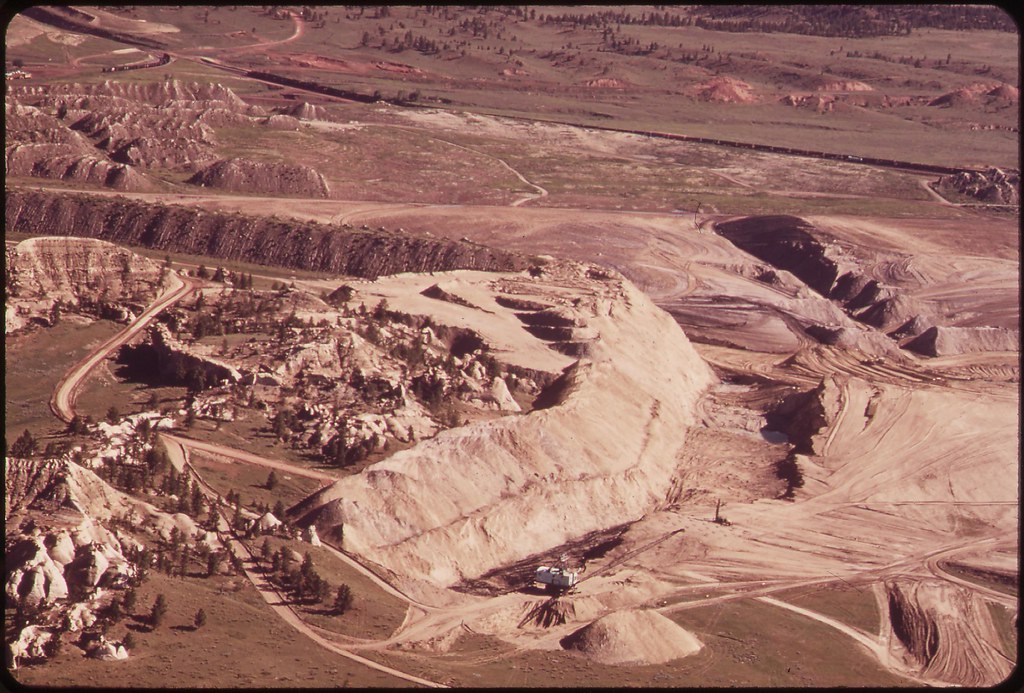
Peabody Coal Company strip mine, south of Colstrip. The coal fields of the Powder River Region cover some 25,000 square miles, the largest such area in North America. Long-range proposals call for massive strip-mining of this region, coupled with the construction of many huge power plants. The eventual mining development may be of such magnitude as to make the devastation of Appalachia seem minor by comparison.
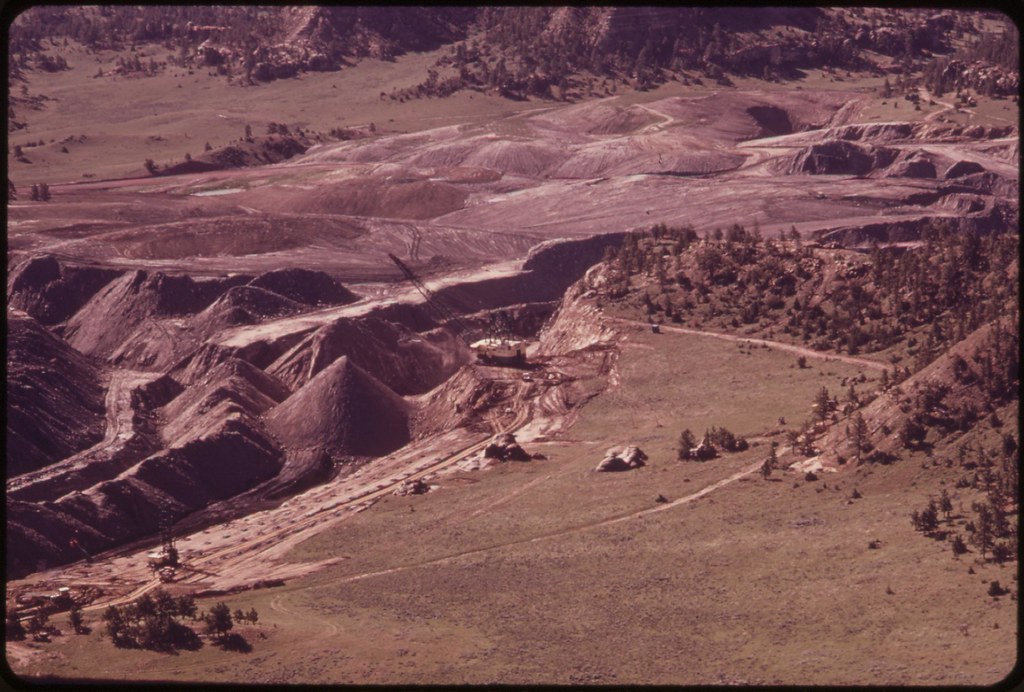
Peabody Coal Company strip mine, south of Colstrip. The coal fields of the Powder River Region cover some 25,000 square miles, the largest such area in North America. Long-range proposals call for massive strip-mining of this region, coupled with the construction of many huge power plants. The eventual mining development may be of such magnitude as to make the devastation of Appalachia seem minor by comparison.
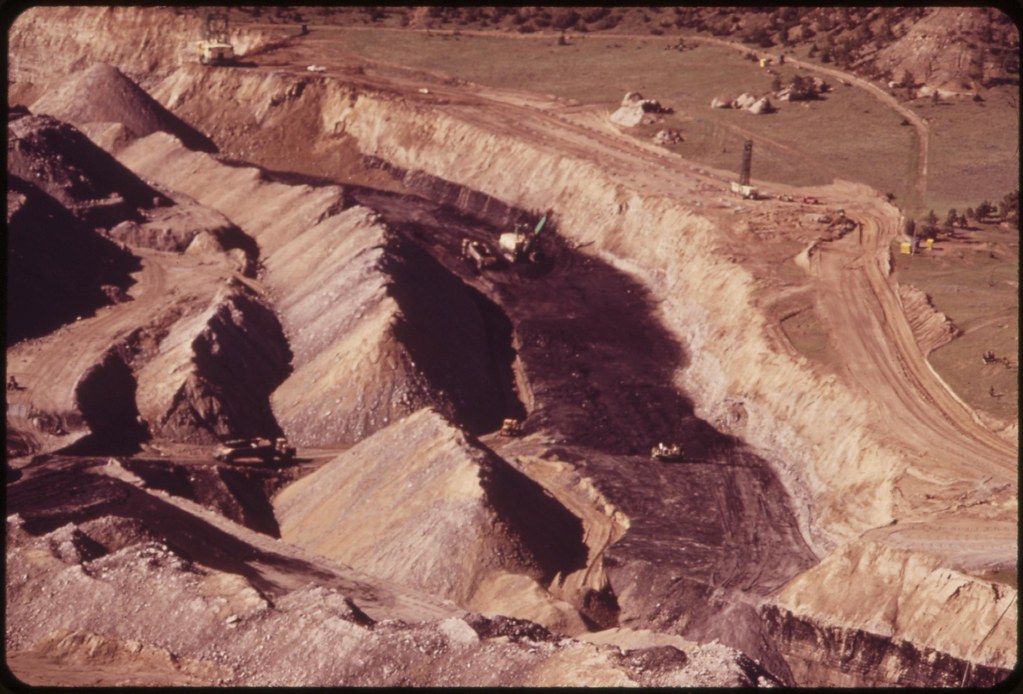
Peabody Coal Company strip mine, south of Colstrip. The coal fields of the Powder River Region cover some 25,000 square miles, the largest such area in North America. Long-range proposals call for massive strip-mining of this region, coupled with the construction of many huge power plants. The eventual mining development may be of such magnitude as to make the devastation of Appalachia seem minor by comparison.
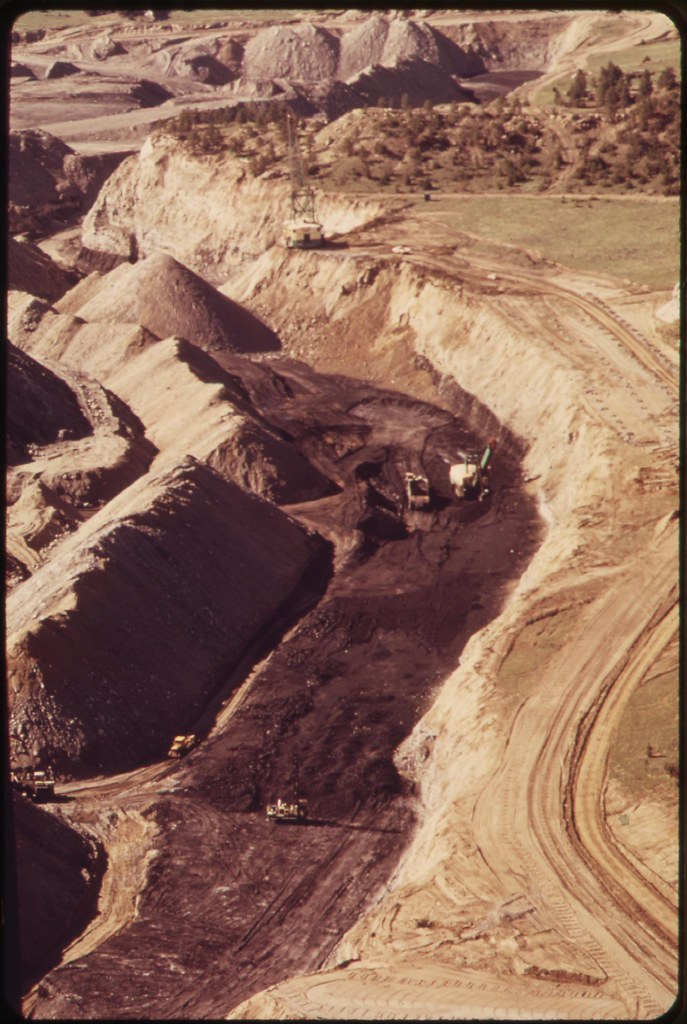
Peabody Coal Company strip mine, south of Colstrip. The coal fields of the Powder River Region cover some 25,000 square miles, the largest such area in North America. Long-range proposals call for massive strip-mining of this region, coupled with the construction of many huge power plants. The eventual mining development may be of such magnitude as to make the devastation of Appalachia seem minor by comparison.
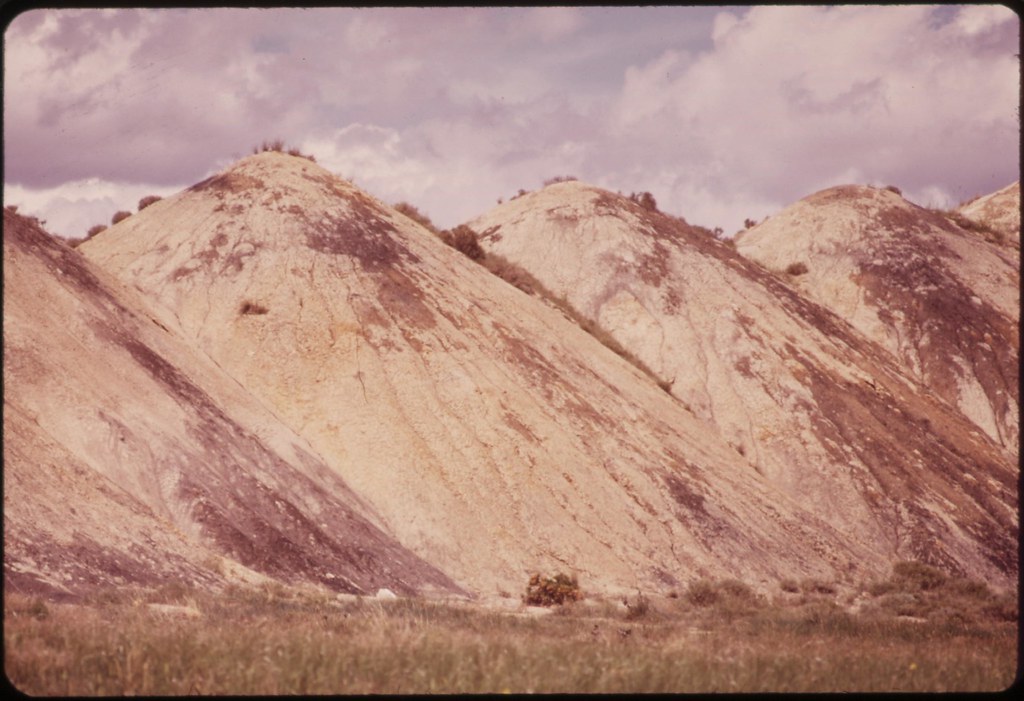
These strip-mining spoil piles are about twenty years old

In 20 years nothing has grown on this old spoil pile from a strip mine near Colstrip, Montana

Spoil piles left by Burlington-Northern strip mining operations 20 to 30 years ago, Montana
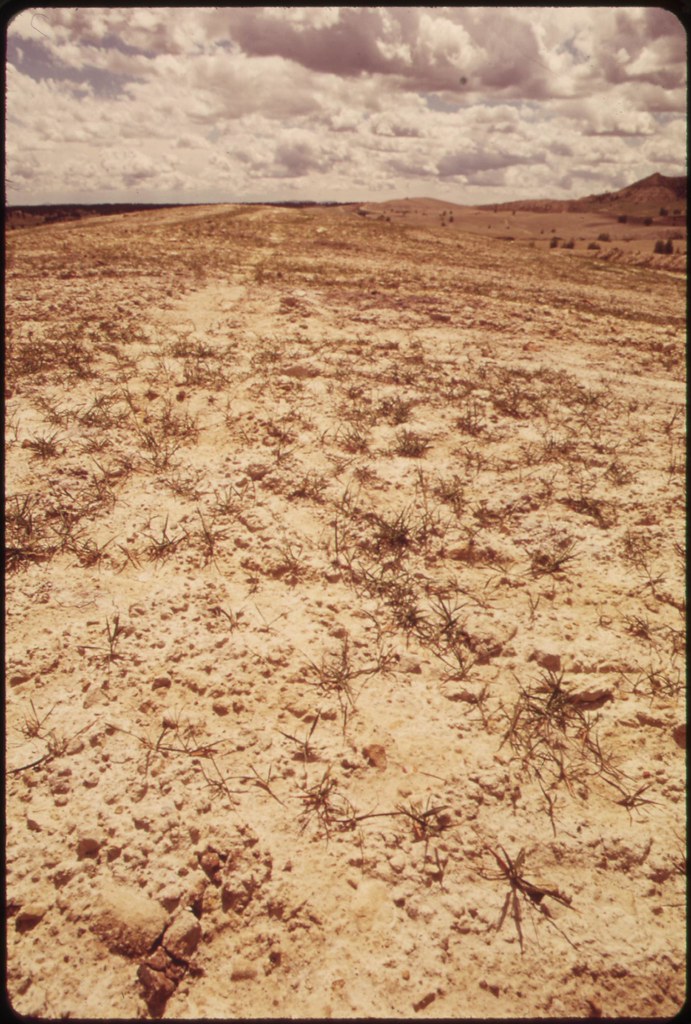
Reclamation effort on strip mined land near Colstrip. Old spoil piles are flattened and planted. Dry climate and shallow soil allow only sparse growth.
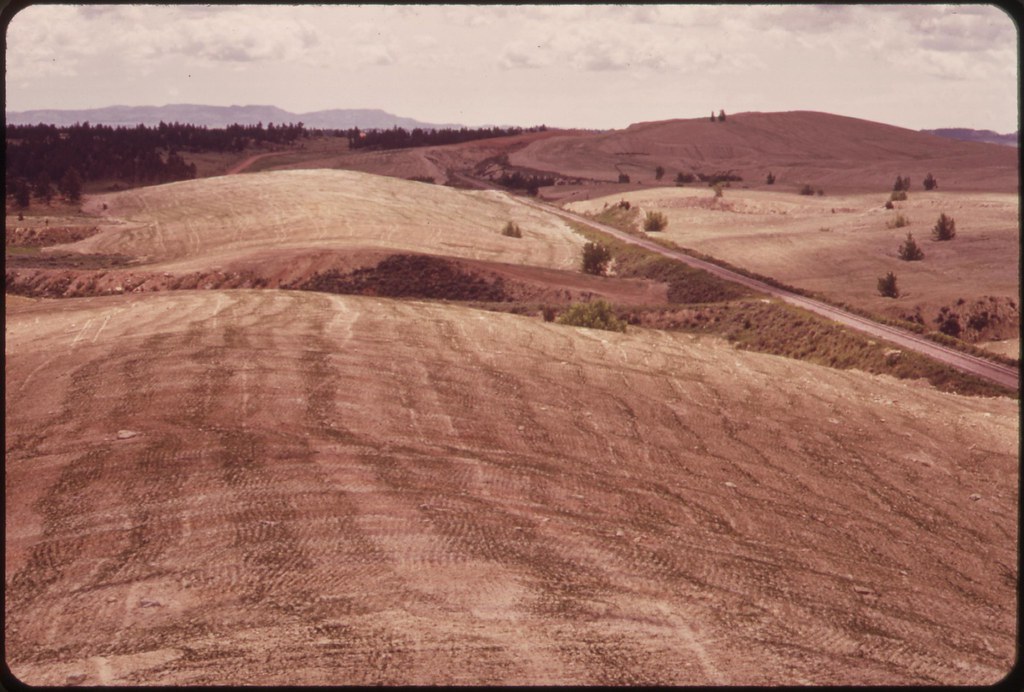
Reclamation effort on strip mined land near Colstrip. Old spoil piles are flattened and planted. Dry climate and shallow soil allow only sparse growth.

Reclamation effort on strip mined land near Colstrip. Old spoil piles are flattened and planted. Dry climate and shallow soil allow only sparse growth.
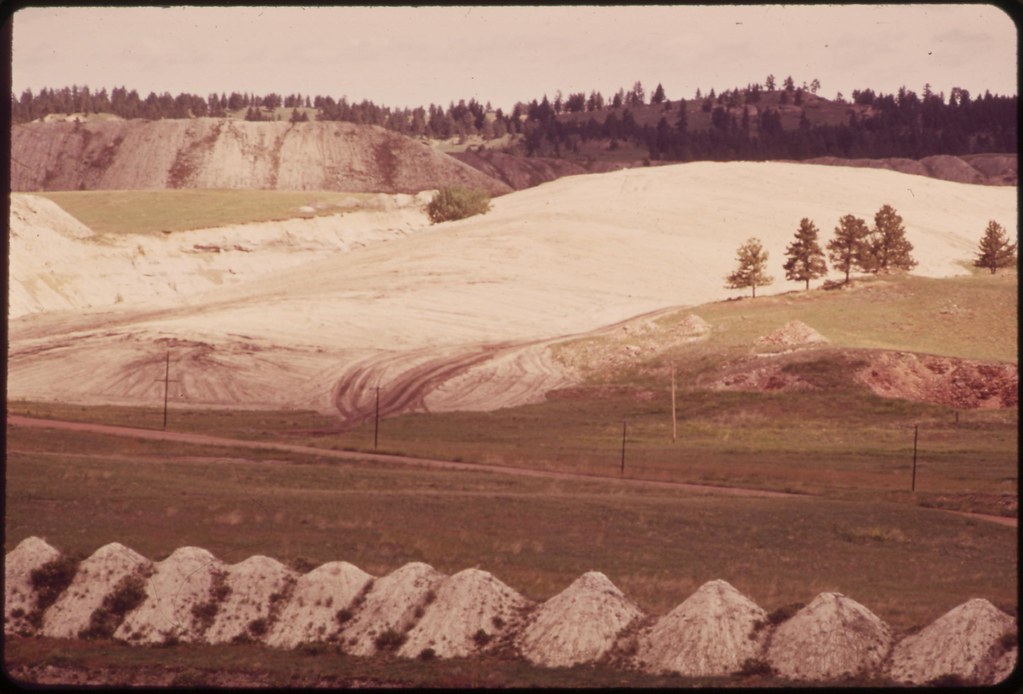
Strip-mined land is flattened and graded for reclamation; old spoil piles in foreground
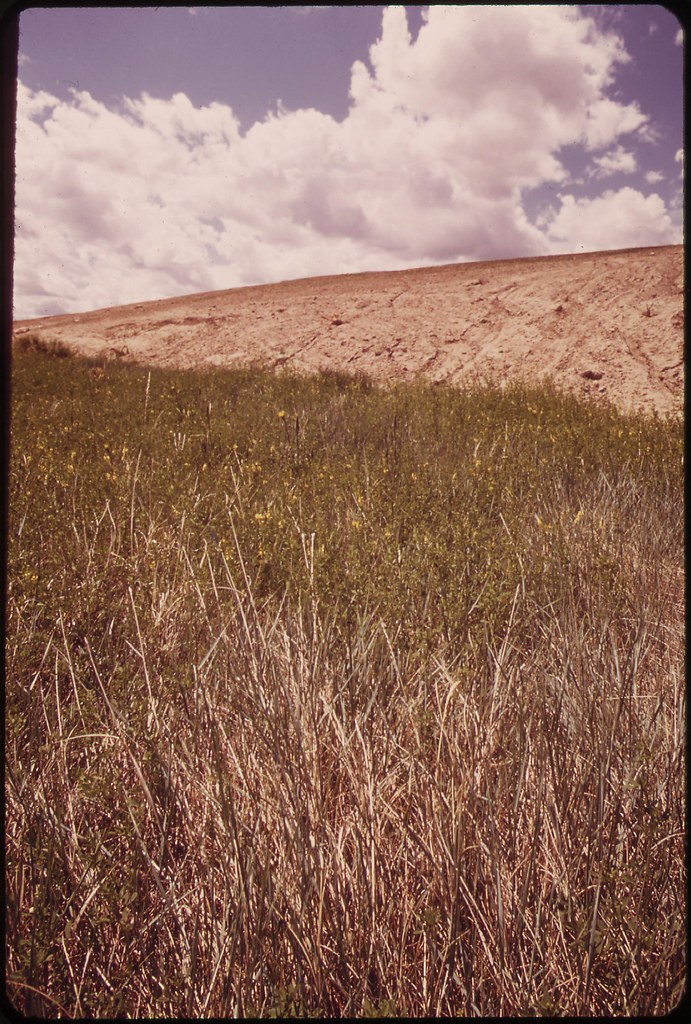
Thick cover of prairie grass ends at "reclaimed" mining spoils near Colstrip, Montana. Although the spoil piles are flattened and planted the dry climate and shallow soil allow only sparse growth.
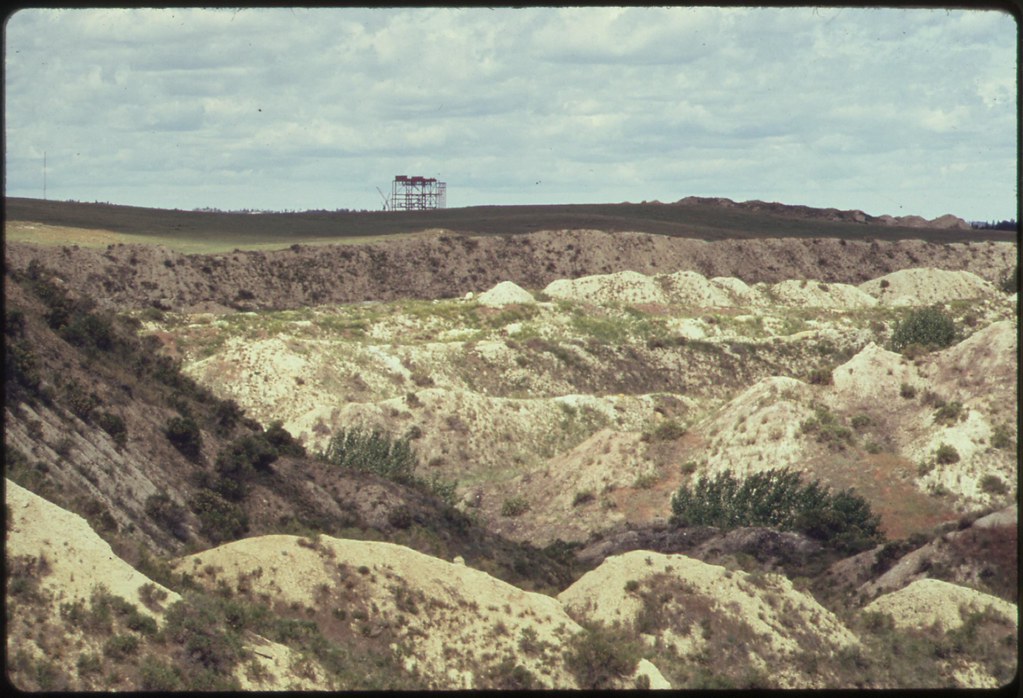
A 350 megawatt power plant under construction at Colstrip, Montana overlooks 20-year-old strip mine spoil piles
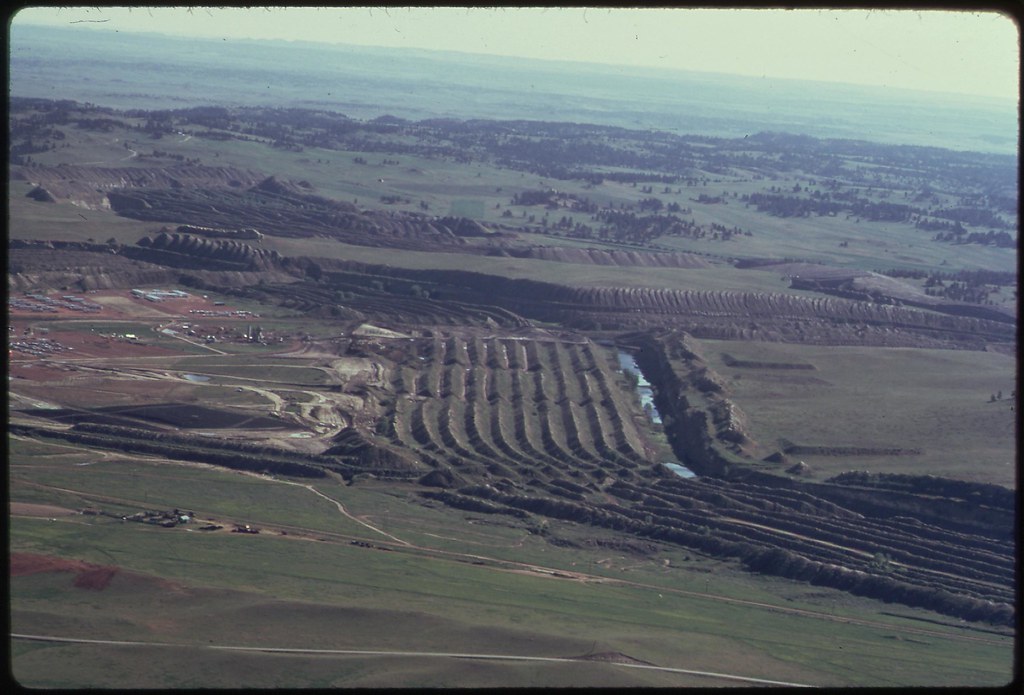
Power plant under construction alongside old spoil piles left by Burlington-Northern strip mining operation 20 to 30 years ago
Photos by Boyd Norton (1936-), June 1973, for the Environmental Protection Agency's Documerica project (U.S. National Archives)
Mother Earth is just in the process of becoming the universe's New Mars.
ReplyDeletewe are now in the very beginning stages of our search for a new planet to rape and to export our dreck to... we leave our garbage everywhere ... on the moon, on mars in the near-outer space ...
As I scrolled down the page today, from picture to picture, it was as though I was descending from an earthly Paradise to the (coal) pits of Hell. Ed Baker’s thoughts today, re Mars, have been my thoughts too, for some time. Our stain spreads out to the stars.
ReplyDeleteYes, that stain -- we've "evolved" all these aeons to become, what was it exactly... a bug splattered on the windscreen of the universe in some passing cosmic storm?
ReplyDeleteThe big push for extraction in the Wyoming/Montana coal ranges began in 1973-1974 and was largely a consequence of the OPEC embargo, itself a consequence of US support for Israel in the Yom Kippur War. It was in that period that Boyd Norton took the pictures in these last two posts. Six years later the interruption in production brought about by the Iranian Revolution caused another surge in domestic extraction in that region. It was then I went out on a magazine assignment to survey the sites. That included the big open pit strip mines in the Powder River Basin as well as slurry pipeline and oil and uranium developments all along the ranges. I have no idea what Mars might look like, but I do know what Earth looks like when it's been strip-mined. The comparison would probably be insulting to Mars. History since then makes it plain the majority of the citizenry believes it a national entitlement to keep all the lights on and the thermostats permanently in the torrid zone, no matter the environmental consequences. The fact that most power production comes from the burning of coal, absolutely the dirtiest of fuels, is not exactly a secret. Even the Chinese know it. But since when was knowledge a factor?
Strip mining for coal was still going on in eastern Kansas in 1974, not far from the scenes in your Feb 10 post "Grasses: An Elegy". As they were abandoned, they filled with water & became swimming holes. A favorite of my friends was behind the Hosey Hill cemetery in Weir—it was accessible, had sheer banks for diving, & was not infested with snakes like some of the others. About that time ('73 or '74) Ginsberg came to town (Pittsburg KS) with his dad. Louis did his set, then Allen performed some greatest hits, including Wichita Vortex Sutra. But what I remember most was his long extemporaneous poem, accompanied by a couple of local hippies on guitars, touching on the political history of Crawford County, the socialist publisher E. Haldeman-Julius, and Big Brutus, the enormous shovel still working coal in the one remaining strip pit.
ReplyDeleteYup. The only thing to do is to get off the grid, completely. Dump the heat. Dump the light. Dump it all. You guys first.
ReplyDeleteVanderleun,
ReplyDeleteThat's the trouble, we DID go first. Broken furnace. Haunted house. Two candles borrowed from church, and two badly rusted "C" batteries. The light is feeble. Where's my strip mine, now that I could really use it?
Ad Astra,
Following upon Hazen's interestingly Marlovian suggestion that our conduct as a race will leave us but a messy stain upon the stars, seeing your moniker puts me in mind of the opposite quality of the human spirit, the comically aspirational, the cosmic jester skinnydipping in the tailings ponds of yesteryear, the sorcerer's apprentice dreaming he is conducting the constellations as a great swarm of LEDs under the ultimate Big Top, much as what happens between 4:20 and 5:40 here.
(Oh, and about Louis -- there was a period in the early to mid 1960s when I received a poem from him in the transatlantic mail almost every day.)
By the way, for those who might have an interest in what this post was meant to be about:
ReplyDeleteHow Coal Works
They're at it again, this time in Bristol Bay, Alaska: documentary
ReplyDeleteAnnie,
ReplyDeleteSo sad. And so familiar.
"We can't mitigate our way out of this mess..."